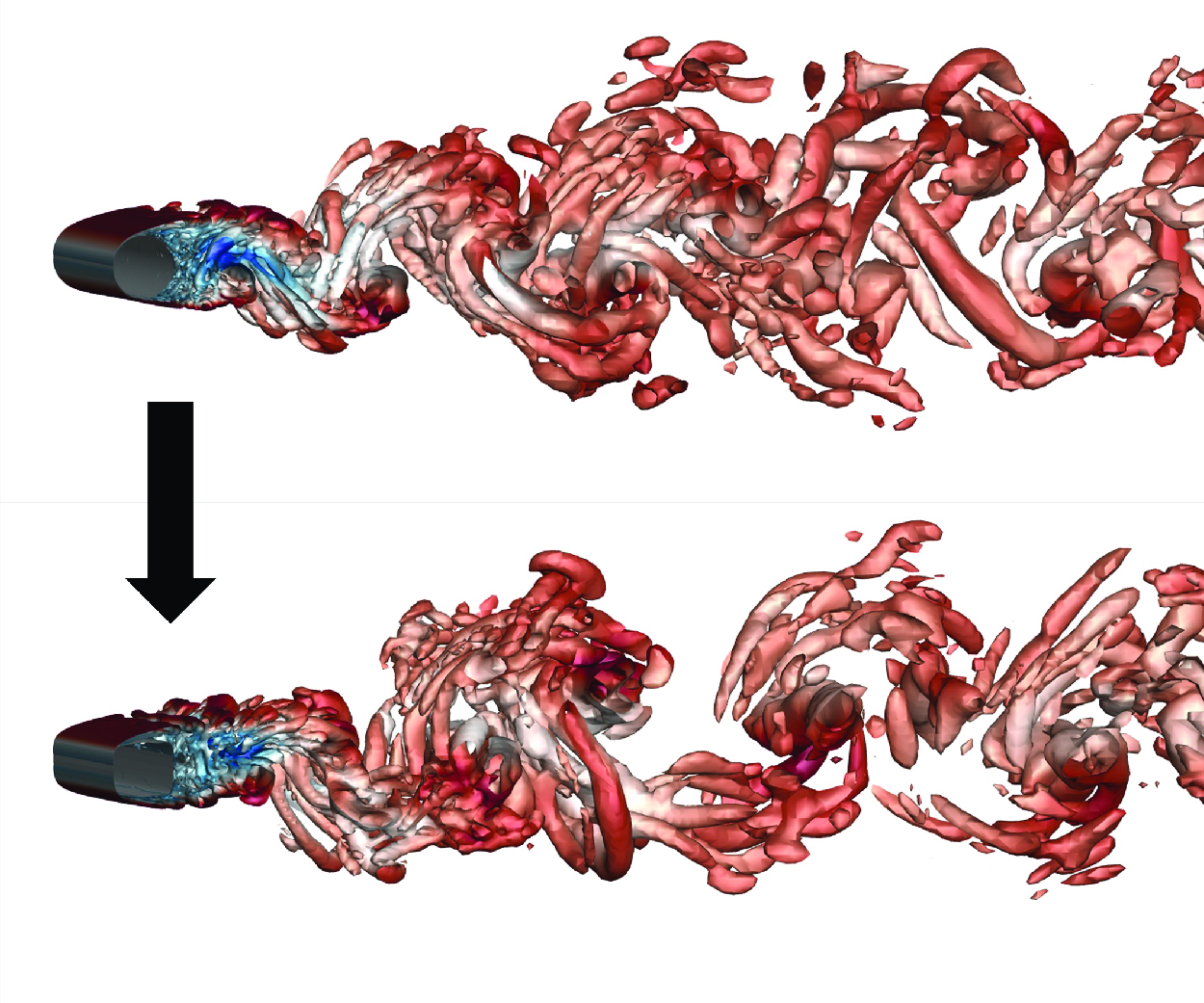No CrossRef data available.
Article contents
Resolvent-based shape optimisation for a two-dimensional cylinder at low Reynolds numbers
Published online by Cambridge University Press: 05 June 2025
Abstract

Flow over bluff bodies encounters instability at supercritical Reynolds numbers, exhibiting the periodic vortex shedding that leads to structural vibrations and acoustic noise. In this paper, a new aerodynamic shape optimisation strategy based on resolvent analysis is proposed to passively control the vortex shedding over two-dimensional cylinders. Firstly, we show that when the flow satisfies the rank-1 approximation, minimizing the maximal resolvent gain enhances flow stability. Secondly, we formulate the geometry-constrained resolvent-based optimisation problem that can be solved by the nonlinear conjugate gradient algorithm. Compared with conventional stability-based optimisation, the proposed approach is more effective as it avoids the cumbersome eigendecomposition of the high-dimensional Jacobian matrix. The efficacy of the proposed resolvent-based optimisation is validated through improving the stability of the one-dimensional Ginzburg–Landau equation. Thirdly, this approach is applied to suppress the vortex shedding of bluff bodies, initialised by a circular cylinder. Although the optimisation is performed at a subcritical state  $Re = 40$, reduced vortex shedding and drag forces can be achieved at supercritical Reynolds numbers, while the critical Reynolds number is extended from
$Re = 40$, reduced vortex shedding and drag forces can be achieved at supercritical Reynolds numbers, while the critical Reynolds number is extended from  $47$ to
$47$ to  $60$. Dynamic mode decomposition is then performed to reveal that the optimised system becomes more stable and satisfies the rank-1 approximation. Finally, we demonstrate that the combined effects of the flattened surface and the Coanda effect delay flow separation, keeping the separation point nearly unchanged at supercritical Reynolds numbers (e.g. between 80 and 140) for the optimised geometry. This results in a substantial reduction in the strength of vortex shedding, which in turn leads to decreased drag forces. The optimised shape still achieves drag reduction in turbulent flows at a relatively high Reynolds number.
$60$. Dynamic mode decomposition is then performed to reveal that the optimised system becomes more stable and satisfies the rank-1 approximation. Finally, we demonstrate that the combined effects of the flattened surface and the Coanda effect delay flow separation, keeping the separation point nearly unchanged at supercritical Reynolds numbers (e.g. between 80 and 140) for the optimised geometry. This results in a substantial reduction in the strength of vortex shedding, which in turn leads to decreased drag forces. The optimised shape still achieves drag reduction in turbulent flows at a relatively high Reynolds number.
Information
- Type
- JFM Papers
- Information
- Copyright
- © The Author(s), 2025. Published by Cambridge University Press

